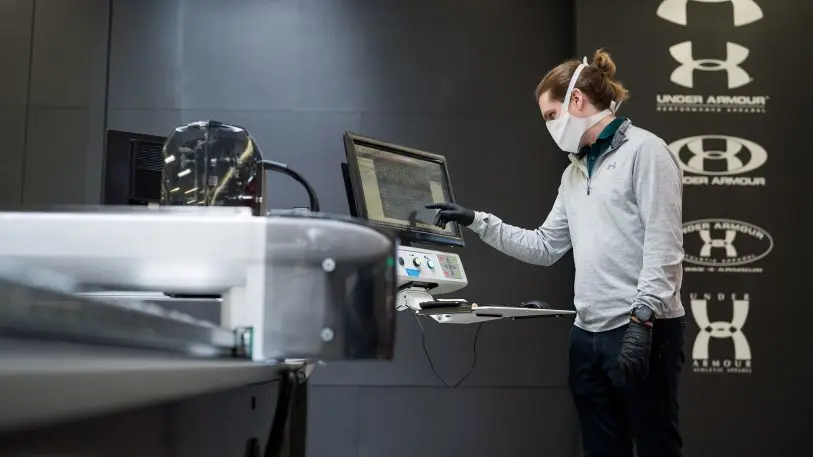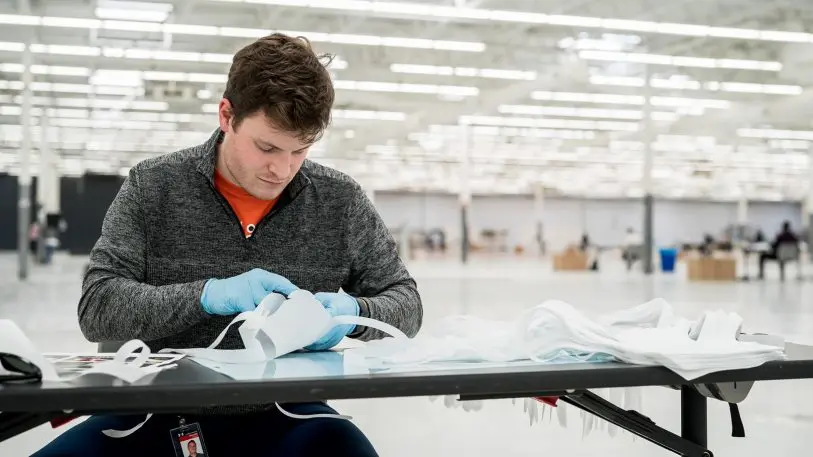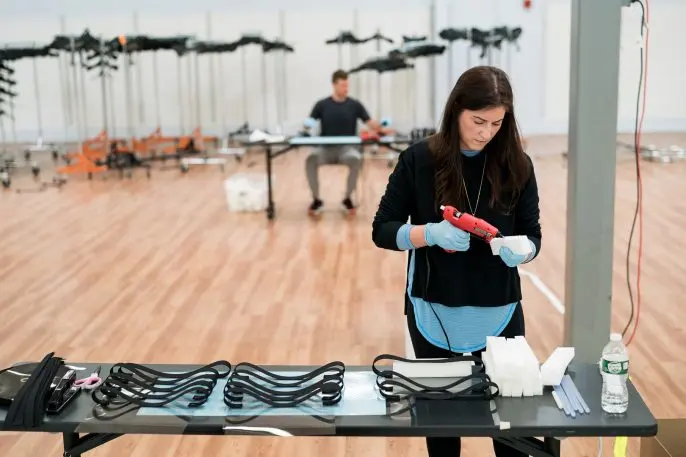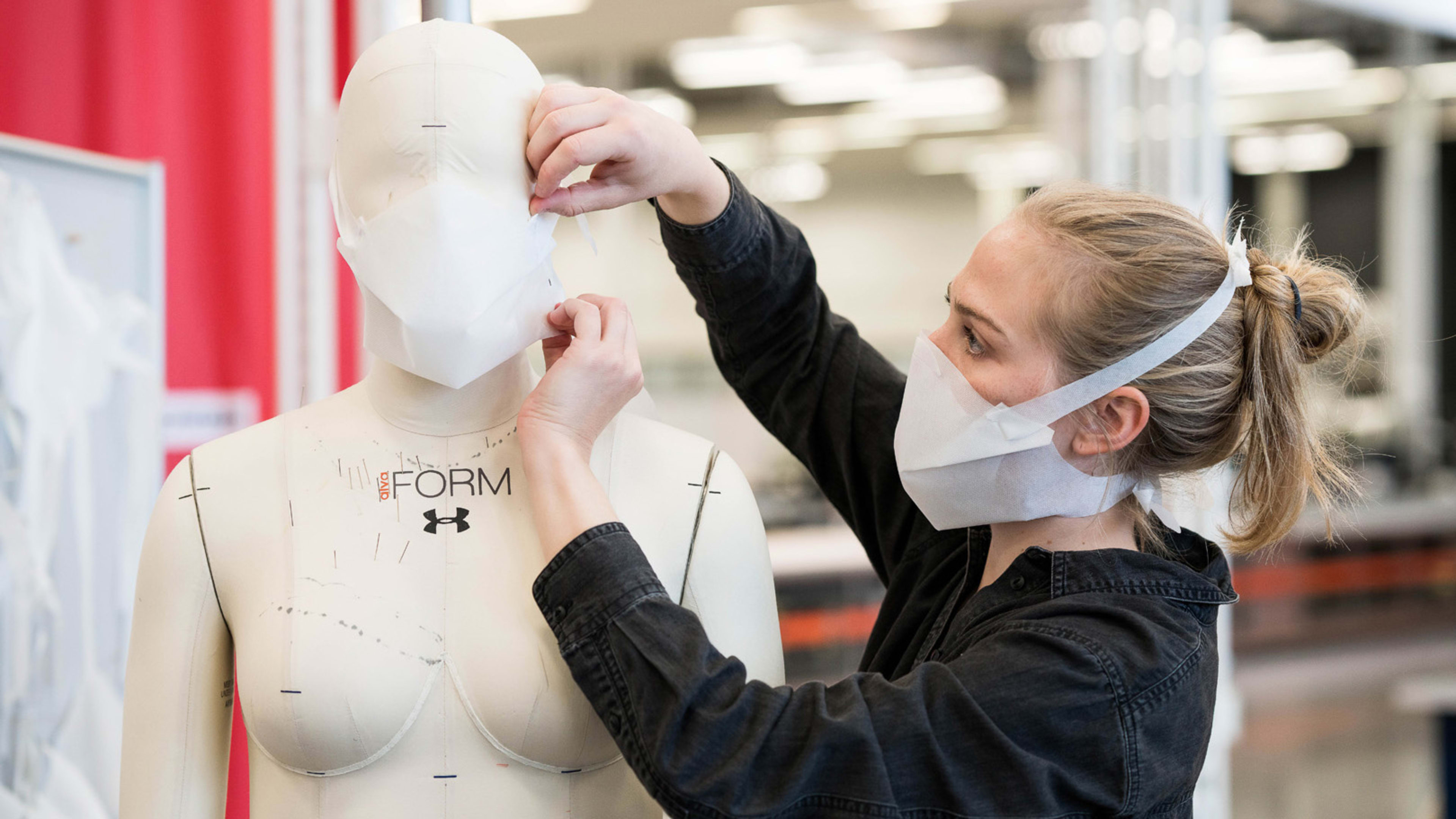The athletic wear company Under Armour has unveiled an innovative new surgical mask that’s made of a single piece of fabric and doesn’t require any sewing. That means it can be produced rapidly in large quantities to meet the needs of medical workers on the front lines of the coronavirus crisis. Under Armour estimates it can manufacture 100,000 of these masks a week.
There is a global shortage of protective gear for healthcare workers. This problem is likely to be aggravated if the Centers of Disease Control and Prevention decides to reverse its previous stance and encourage the general population to wear masks in public. Hospitals have been putting out calls for masks, gowns, and other gear, and many apparel brands, including Rothy’s, American Giant, and Christian Siriano, have quickly shifted their production in response. Under Armour counts among them.

Executives at Under Armour had heard from local hospitals about a shortage of protective gear, so the company started thinking about how it could use its resources to help. In a week, Under Armour turned the innovation lab in its Baltimore headquarters—known as the UA Lighthouse—into a factory that makes disposable surgical masks, face shields, and even fanny packs.
[Image: Under Armour]
Randy Harward, Under Armour’s senior vice president of advanced material and manufacturing innovation, was tasked with the company’s efforts to produce face masks. He issued a challenge to a team of 50 designers at the company: They had to come up with a mask that could be produced quickly and at scale. After a process of rapid prototyping and iteration, they settled on a one-piece mask that does not require any sewing. While mask designs vary, the typical mask involves several pieces of fabric that must be sewn together. “This design allows us to share masks with healthcare facilities quicker than we could if we had to sew them,” Harward says, in an email.
The masks are made from a breathable, moisture-resistant fabric, which is similar to the material used for traditional surgical masks. (One study found that surgical masks only let in 44% of particles in the air.) Harward explains that the masks have two primary purposes. They make it harder for the wearer to touch their face, which reduces the risk of getting infected themselves. And given that many people don’t even realize they have the virus because they have no symptoms, the masks could reduce the spread of the virus in hospital settings. “Our masks act as a first level of defense, reducing virus -laden moisture and droplet spread,” Harward explains.
Internally, Under Armour has nicknamed its design the “origami mask” because the folds of the masks resemble origami. The folds are carefully positioned to adapt to the topography of the face, rising to cover the nose, cheeks, and chin. The fabric, which is non-wicking to prevent droplets from the wearers’ mouth from entering the air, is large enough to cover the entire face all the way from the bridge of the nose to the space behind the ears, and is secured by a long ribbon of fabric that is tied behind the head. This ensures a tight fit that does not create gaps around the edge of the mask. The masks are designed to be used for a day and then thrown away.

The company has now turned an unused section of Lighthouse into a factory to mass-produce the masks at a pace of 100,000 a week. The company will use its knife cutter, which is an efficient fabric-cutting machine, to slice through nearly 100 pieces of fabric at once. This cut fabric is then passed to a group of volunteers who will fold and prepare them for distribution. The masks will be sent to the University of Maryland’s medical system’s 28,000 healthcare workers and staff, who are fighting the coronavirus in Baltimore. Maryland is quickly becoming a hot spot, with the number of confirmed cases surging by more than 20% this week to 1,985 cases and 31 deaths.
Under Armour is also serving other medical institutions in the area, including LifeBridge Health, Johns Hopkins Medicine, and MedStar. The masks will be sold to these organizations at cost.
[Image: Under Armour]
Pothik Chatterjee, executive director of innovation and research at LifeBridge Health, says that his team has been struggling to procure personal protective equipment for his hospital system. “There’s definitely price gouging happening, and there are many vendors that aren’t trustworthy,” he says. “It’s such a relief to have access to these masks for our workers.”
Under Armour’s masks have not been certified by any medical organization. In its official statement, the company says that its masks “could provide an additional barrier against the virus to shield healthcare workers.” (For instance, some doctors might choose to wear it on top of an N95 mask to make the latter last longer.)
Chatterjee says that Under Armour’s masks provide the same level of protection as a surgical mask, and when used in conjunction with a face shield—a piece of clear plastic designed to cover your face—they provide adequate protection for workers who are not interacting with known COVID-19 patients. “All of our N95 masks are being prioritized for those working directly in COVID-19 wards and ICUs,” he says. “But we need masks throughout the healthcare system. We want our workers to wear masks when they are walking down the hall and to their car.”

Recognize your brand’s excellence by applying to this year’s Brands That Matter Awards before the early-rate deadline, May 3.
